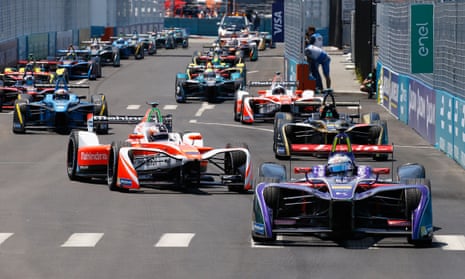Summer heralds the silly season in Formula One as the rumour mill goes into overdrive, perhaps more so this year with a variety of seats still to be confirmed for next season. Yet behind the scenes F1 is in the middle of conducting serious business. The task of deciding the future of the sport is under way and the decisions being made will echo long after the sun has set on the summer holidays.
In the weeks leading up to Hungary, motor racing was undergoing a seismic shift and although it did not directly involve F1, the sport must still assimilate the aftershocks.
At the end of last year Audi, a stalwart of endurance racing since 1999 and a participant in the World Endurance Championship (WEC) since it began in 2012, announced it was ending its involvement in favour of joining Formula E. The emissions scandal facing its owners Volkswagen had not helped its cause but more pertinently Audi appeared to be acknowledging the diesel hybrids it was running no longer fitted with where its market in road cars was going.
On the Friday before the Hungarian Grand Prix, Porsche, also owned by Volkswagen, announced it too was leaving the WEC at the end of this season and would enter Formula E in 2019. Only four days earlier Mercedes revealed it was to leave the German touring car series DTM, in which it has been competing since 1988. It too announced it would be joining FE in 2019.
None of this happened in isolation. Formula E already boasts a formidable group of manufacturers and the three new teams will line up alongside BMW, Jaguar, Mahindra and Renault. It is, however, a shift in focus that is more complex than a simple PR nod to the environment.
Currently it costs €5-10m a year to run a team in FE. DTM costs between €50-70m for a manufacturer. Porsche and Audi’s annual WEC budget has been reported to be between €80-150m each. Yet these are not sums that the companies involved would have baulked at if they wanted to remain involved.
They are, however, huge figures when the likely future of road cars has undergone a fundamental shift. Electrification has been identified as the future and they want to be part of a series that reflects what is coming. FE may be using old battery technology, spec cars and is still far from attracting a mass audience but it is still ticking an awful lot of boxes in board rooms.
The first all-electric Audi is due out in 2018. The president of Ferrari, Sergio Marchionne, who is also the CEO of the manufacturer Fiat Chrysler, has said one of the brands the group owns is also likely to enter FE. Maserati, whose cars will be electrified by 2019, is a strong favourite. It is part of a wider process. Marchionne also announced last week that half of the group’s entire fleet, which includes Alfa Romeo, Dodge, Chrysler and Fiat, would be electrified by 2022.
Formula E, with its city-based racing is gaining a new audience outside that of traditional motor sport and that dovetails neatly with where manufacturers see their sales in a decade’s time. “Electrification is happening in the road car world and Formula E offers manufacturers an interesting platform to bring this technology to a new audience,” the Mercedes F1 executive director, Toto Wolff, has noted.
He will not be the only senior figure in Formula One to have been following these developments closely. F1’s sporting director, Ross Brawn, is deciding what engines the sport will use in 2021. His team met current manufacturer entrants and others, including Volkswagen, in March. In July they did so again with Aston Martin, Cosworth, Zytek and Magneti Marelli also in attendance. A proposal of their plans could be made as soon as next month.
Their conclusions will be key. F1, as Brawn has acknowledged, has aligned itself with road car technology in the past few years but the two are diverging and F1 needs to decide where it stands.
To further encourage manufacturers of engines the costs must come down. A twin-turbo V6 with Kers but without the expensive heat energy recovery systems seems to be a likely outcome. As do joint ventures between independent manufacturers and teams. Equally now may be the time for F1 to make clear its distinction from what is attracting business to FE, as a racing spectacle rather than a showroom.
Mario Illien, whose Ilmor firm used to produce Mercedes’s engines, has been involved in the discussions and is clear where he thinks the future lies. “I think road relevance is not that important. We’ve got to go racing again,” he said. “If nobody is going to watch F1 because it’s so boring, it’s not the point. Especially as the world is going more hybrid and electric, we need to have something on the racetrack nobody could have at home.”
Electrification cannot be ignored and it may be the case that there is ultimately a convergence between F1 and FE but for the moment, even as the latter attracts the big names, Formula One needs to choose a path that ensures it will be stronger than ever in 2021.

Comments (…)
Sign in or create your Guardian account to join the discussion